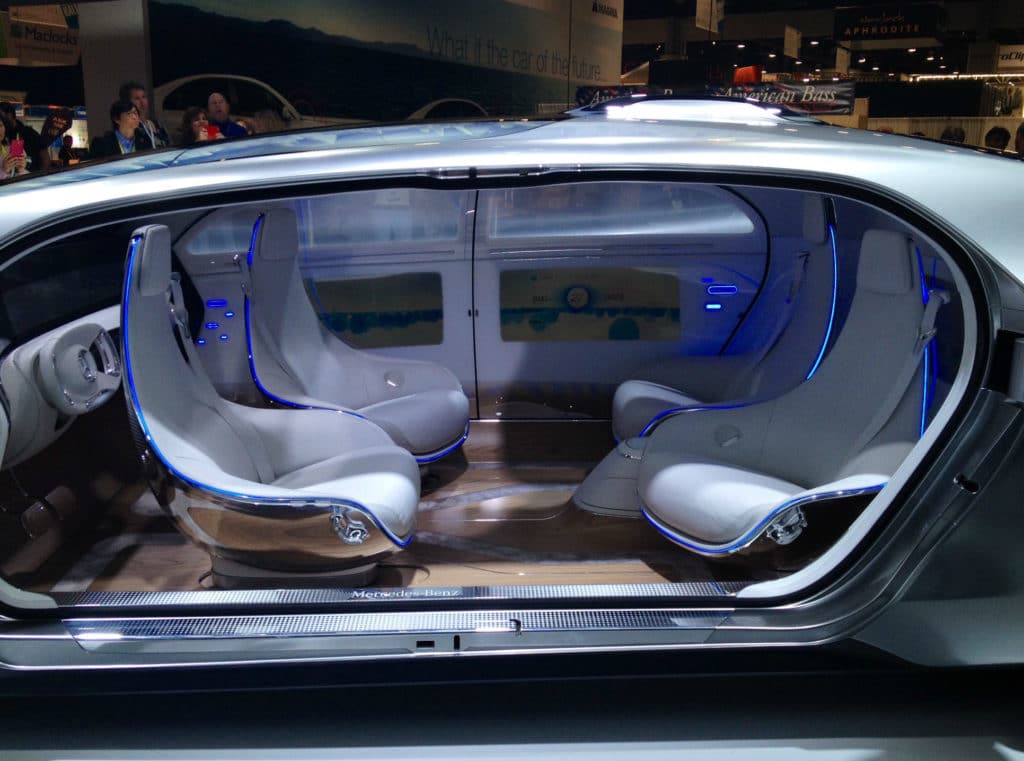CES has been and gone for another year. For the few people who have never heard of it, like those hiding in the hills near Hobbiton in New Zealand, CES stands for the Consumer Electronics Show, held each year in Las Vegas to showcase electronics and technology to trade professionals. It has become the traditional launching ground for many new innovative products.
The 2015 Show was huge, with 3,600 exhibitors and 170,000 attendees. With so many exhibitors it has been hard to sift through the insanity to determine what I think are the five best innovations; the five things on display that I think will have the most meaningful impact on the human experience.
Toyota Freeing Up its Patents
At a show where you normally goggle at new devices and are inspired by totally outside-the-box gadgets it may seem strange to turn my focus to what is really a firm letting others use some of its big secrets. But the reality is that this is a huge change. Toyota has broken the cardinal rule of big corporations – provide information to help others, possibly even competitors!
They made available over 5000 patents they hold relating to fuel cells and similar technologies. Other firms will be able to use the technologies that these patents cover for their own creations, without the need to pay any royalties to Toyota.
Toyota obviously believes that fuel cell technology is very important and that they can help develop the industry if they provide some of the secrets behind their technology to other developers. If more manufacturers develop fuel cell tech the market will develop, costs will come down and more people will move in that direction.
The deal only lasts until 2020, but that should be enough time to see other developers and manufacturers produce their own versions of hydrogen fuel cells. By doing this, Toyota has probably made a huge inroad into the development of the hydrogen-powered car.
Toyota has used CES as a platform for an announcement that will have an enormous impact on what is rapidly becoming one of the most important technologies of this century. If man is going to decrease its strain on the planet then we need to take these technologies seriously, and any company that helps them is okay by me.
Intel Curie
There was a time when computers filled entire rooms, and by today’s standards, had tiny capabilities. Indeed the reason we have the term “bug” in our computing language today is because a bug literally flew into one of these room-sized computers and caused it to malfunction.
The Intel Curie, on display at CES this year, is a real sign of how computers have changed over the last fifty years. It is a computer the size of a small button. Indeed when it was demonstrated as part of a CES keynote speech it was pulled off a button on Intel CEO Brian Krzanich’s jacket.
Curie has real potential in the wearable sector. It gives the ability for smart watches to really live up to their name. It really symbolises the mantra of the computing world: smaller, faster, better, cheaper. This is the winning combination of features for computer chips and the Intel Curie definitely follows that trend. Smartphones became our PCs in our pocket, and we are now increasingly moving to computers being on our wrists or in other innocuous places. I can see the Intel Curie driving a huge number of products over the next couple of years.
OZOBOT Bit
There was another innovation on display that demonstrated the smaller, faster, better, cheaper mantra. Robots have been part of our lives for years, and you have even been able to get them to vacuum your floor for the last decade.
It is probably no surprise therefore, that there were quite a few robots on display at CES, demonstrating different levels of their artificial intelligence. One however, stood out as being a little bit different or, some might say, differently little?
The Ozobot Bit is one tiny fellow, coming in at just one cubic inch. However he wowed the CES audiences with the possibilities he offered children learning to program. He can remember 500 different commands, doing everything from dancing to finding the way out of a maze.
The Ozobot Bit comes with an app, which lets children program the Ozobot’s moves in a language called Blockly and then wirelessly transmit the program to the Ozobot itself. Blockly is a very visual programming language, so children can easily play with and rearrange blocks of code, just as if they were building bricks.
So why do I consider this robot one of CES’s great innovations? The Ozobot Bit not only continues a trend towards teaching children to code at an increasingly young age, but it also introduces them to robotics which is likely to be very large in the field of business in 15 to 20 years, just as those same children will be entering universities and subsequently the workforce.
https://www.youtube.com/watch?v=-xFjTXQ8uho
Netatmo Welcome
Netatmo displayed the newest product in their range at CES and it became an instant hit. The Netatmo Welcome is a camera that can detect people’s faces. It can then notify the owner about who it has “seen”.
It takes HD images of the faces of anyone who comes into its range which it compares with the photos it has in its database. It’s most common use is for security purposes.
Suppose you’ve left the kids at home. They’re old enough to be left alone, but you do worry about them. If you have a Netatmo Welcome you can have the camera set up to send you messages about anyone who comes into the range of the camera. It will tell you when it sees your kids … and it will tell you if it sees anyone else there, including strangers.
Netatmo also has a complementary device called Welcome Tags. You can attach these to doors, windows or gates and they will automatically message you when they are disturbed, for instance by a door opening. You know you have visitors, welcome or otherwise. Combined with the Netatmo unit itself, you can find out who the visitor is (or see if it is a stranger) the moment they come within camera range.
So what’s so special about this technology? It is, in many ways, a simple innovation, expanding on the range of home security products that have become so pervasive over the last couple of years. It has moved the thinking away from security as such, and, thanks to its facial recognition technology, towards understanding WHO is actually entering your home. Is it actually anyone you know?
The Netatmo Welcome Tags by themselves are not overly innovative – there have been many motion detectors telling you that you have visitors on the market for some time. Being able to tell who it is that has come through your door is definitely an advance, though. I expect some type of technology will actually be opening our doors in the future as well (just without the whooshing noises that seems to come with them in the sci-fi movies).
Autonomous Driving Concept Car from Mercedes
The Mercedes F 015 Luxury in Motion research vehicle made its debut at CES. It has a sleek, space-age shape. It has four seats that can turn to face each other. Oh, and by the way, it drives itself.
This is definitely a car of the future that has been produced as a concept car today. Virtually everything you do in it can be done with gestures without having to touch anything. There are display screens around the car where every passenger (remember there is no driver, so even if you are alone, you are a passenger) can see any piece of information relevant to them, and make any modifications by gesturing.
Because the occupants don’t need to drive, the interior is more reminiscent of a lounge than a typical car.
As the Mercedes has to drive autonomously in compete safety, yet share the roads with traditional human drivers, there are many sensors built in to help with the driving. The car has large LED light modules on its front and rear. These allow the car to communicate with and safely operate in the outside world. The LEDs glow blue when the car is driving autonomously and white when it is being operated by a driver. If these cars come on the market and become commonplace, these lights will provide a good guide to other drivers and pedestrians about the status of these cars.
Of course there are still many legislative hurdles to overcome before autonomous cars become a feature of our roads.
It is a concept car. It is simply Mercedes’ vision of how the autonomous car should look (and because it is from Mercedes, luxury is a key part of the equation). So why is it so important?
This concept car helps to show what happens when you rethink all conventions of human interaction with an automobile. Just as companies like Tesla completely rethought the design when the mechanics of motor vehicles changed, we can now start to rethink the design of user experience. The whole way we use a car changes if we are not actively driving. What will I do with the time when I am travelling, but normally driving the vehicle? How would I shift between activities? How does this affect my passengers? What will be my interactions with the passengers? It is a very exciting new territory to explore.
So CES 2015 has been and gone. I’ve picked what I believe will be the innovative winners from this show? It will be most interesting to see where these products go over the next 12 months, and what will be the winners from the 2016 show.




